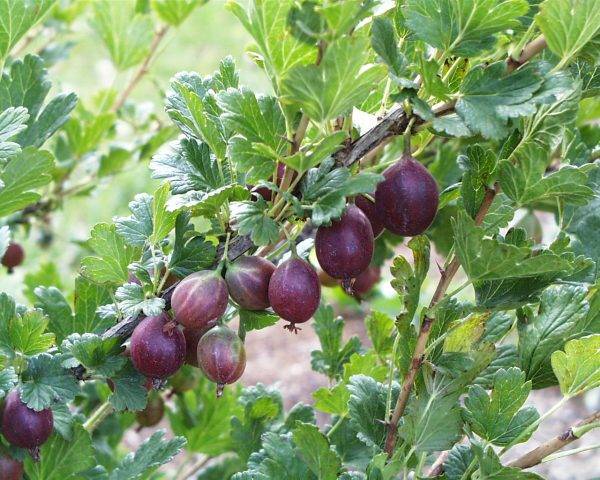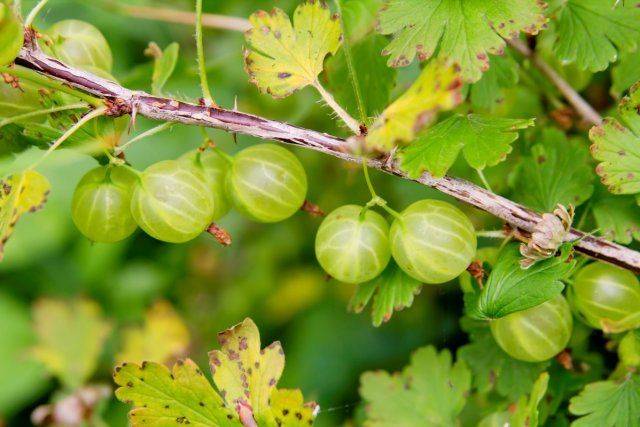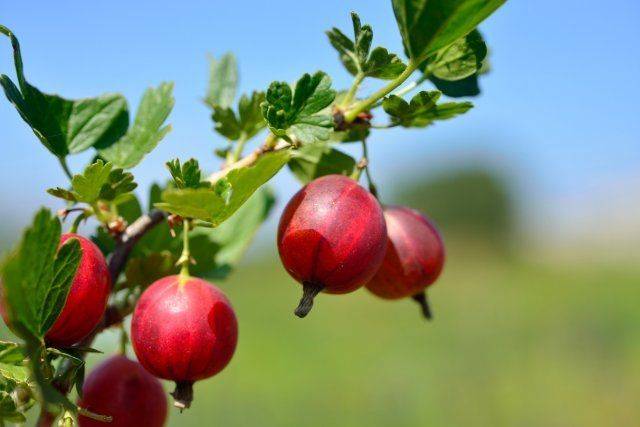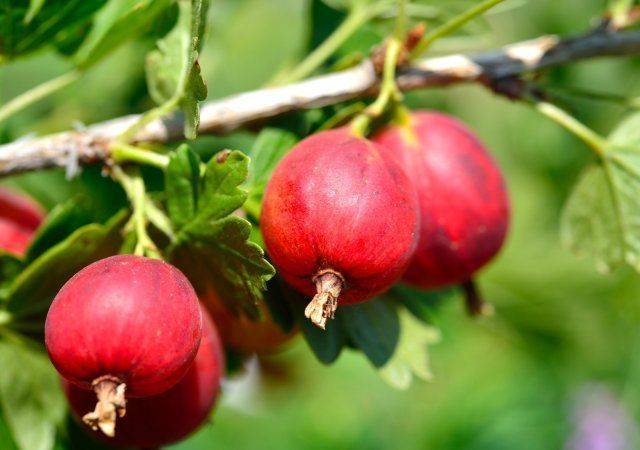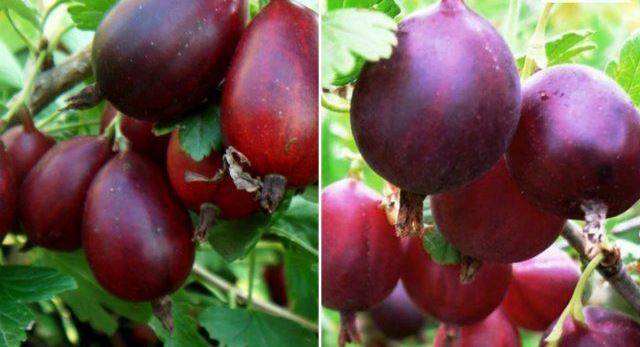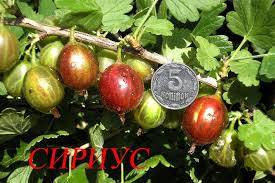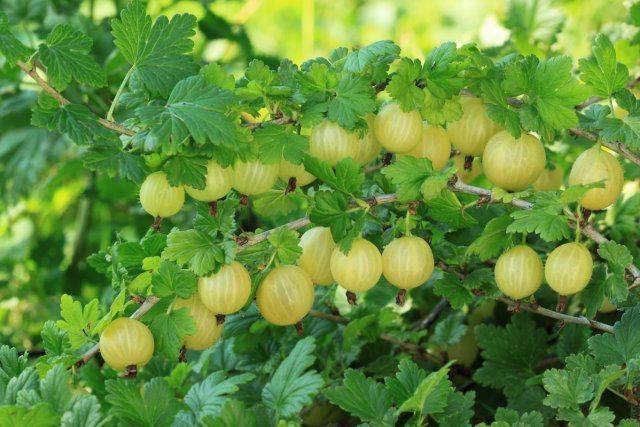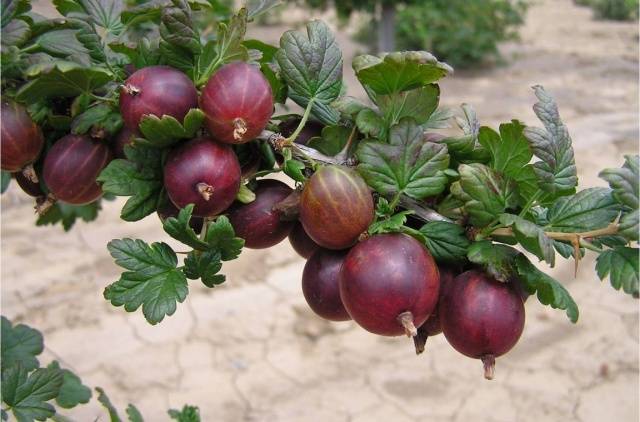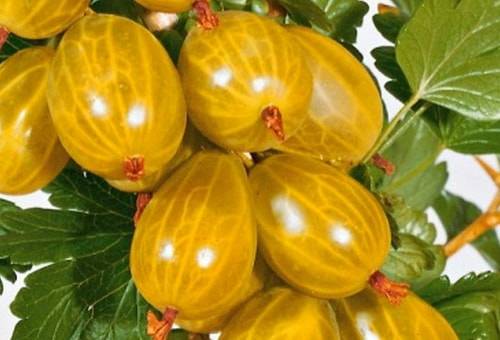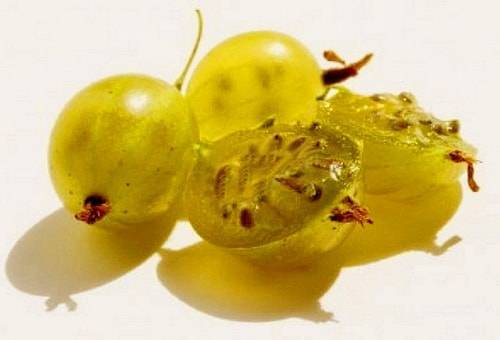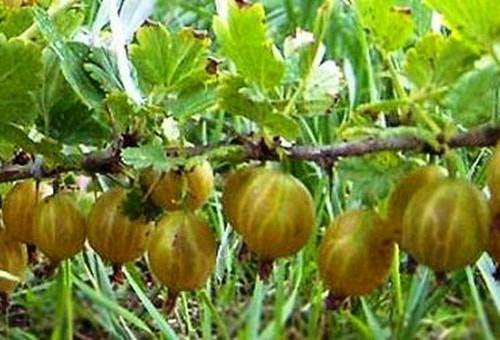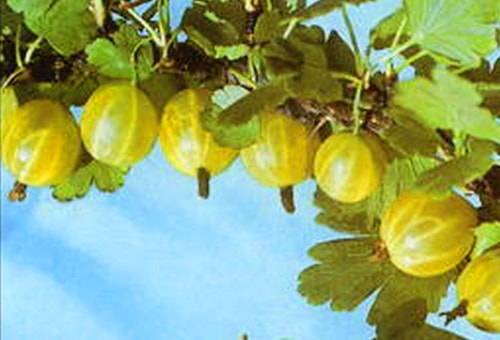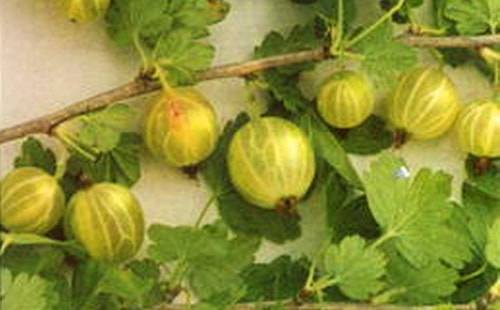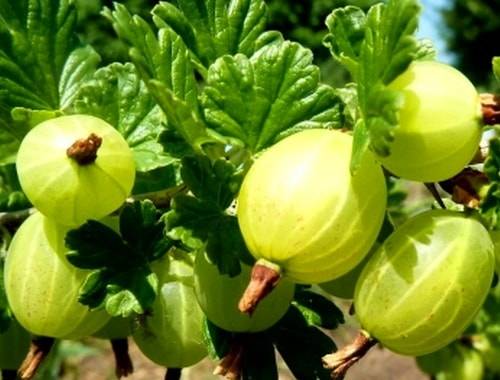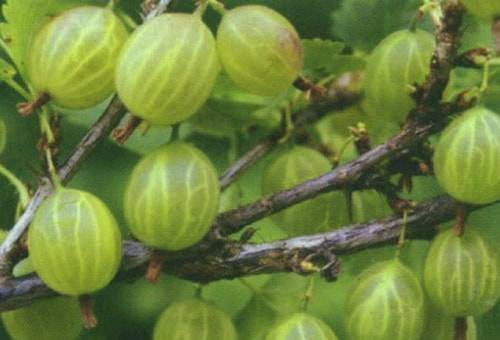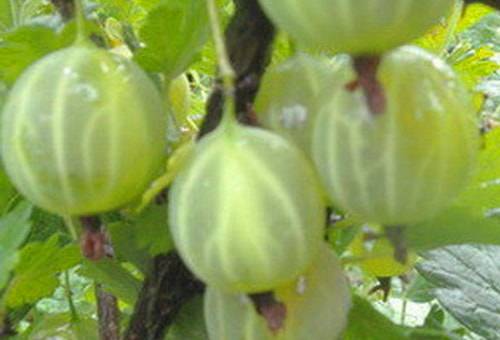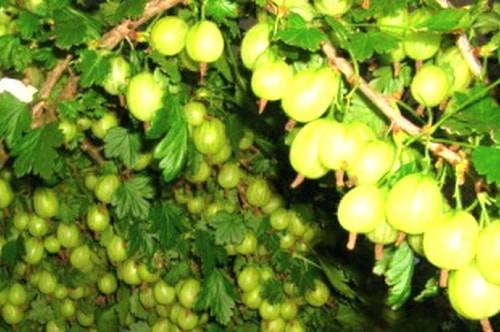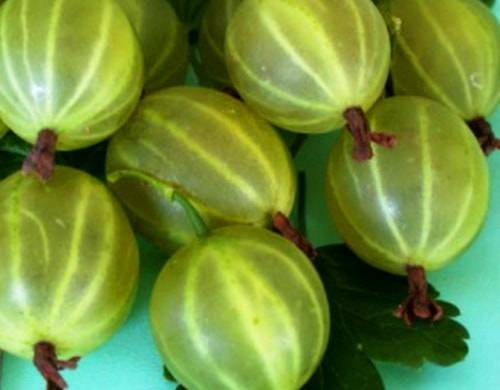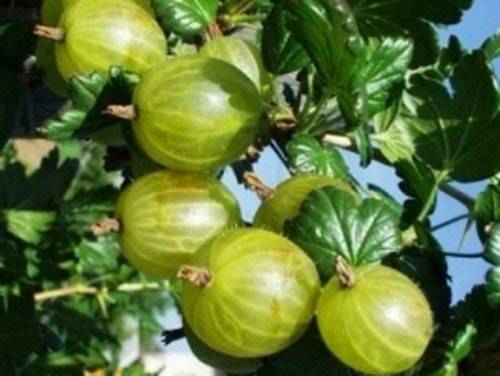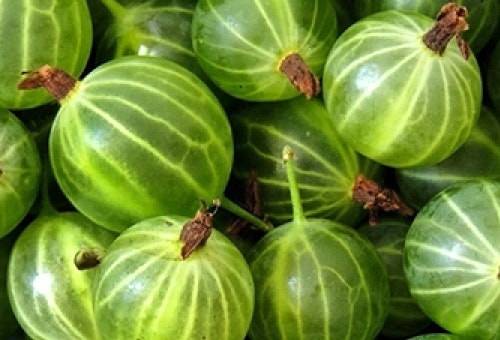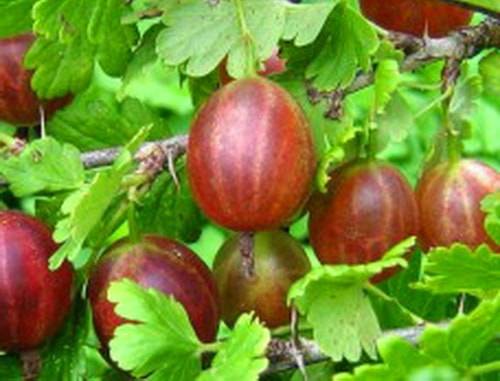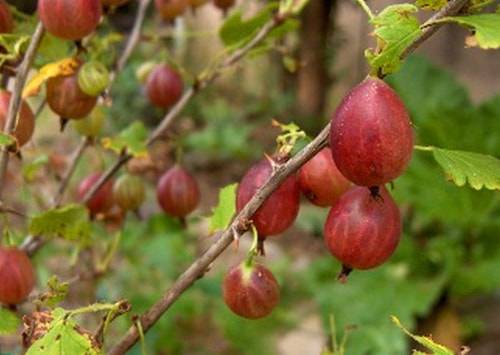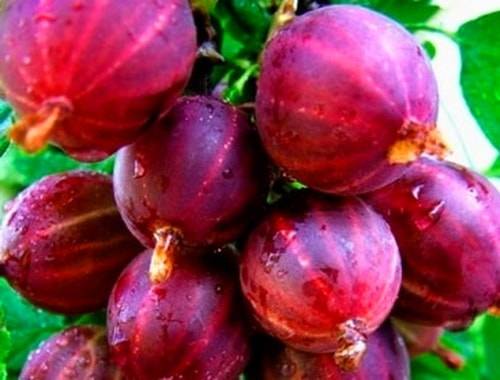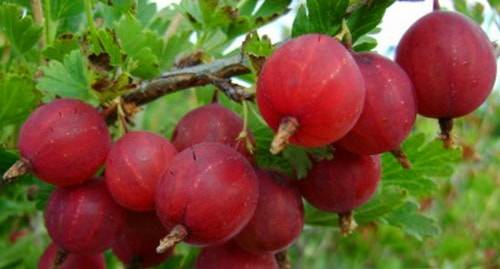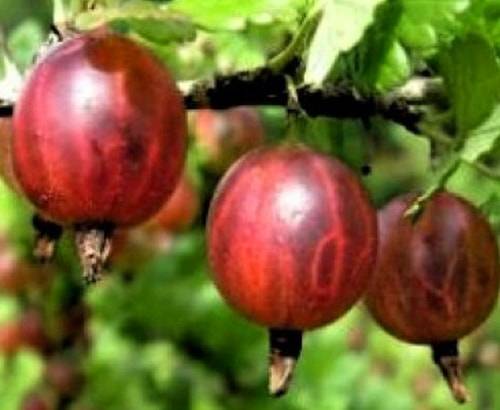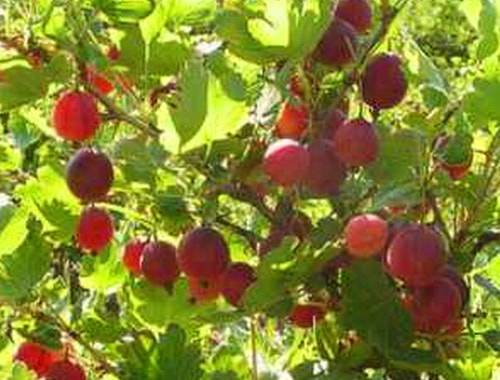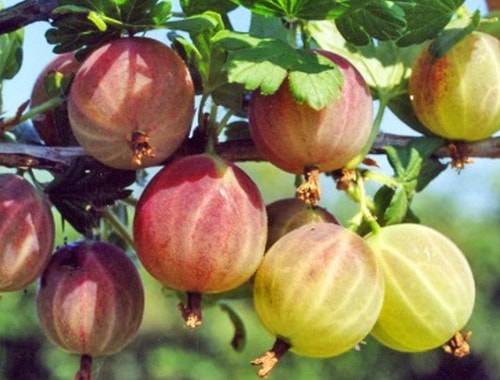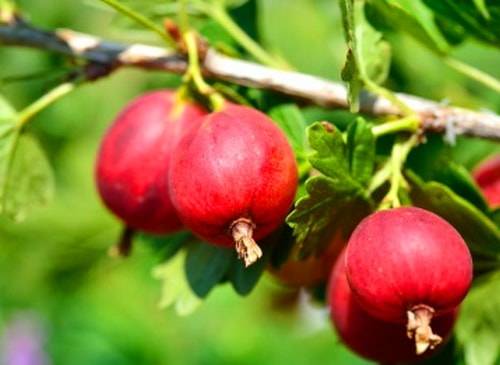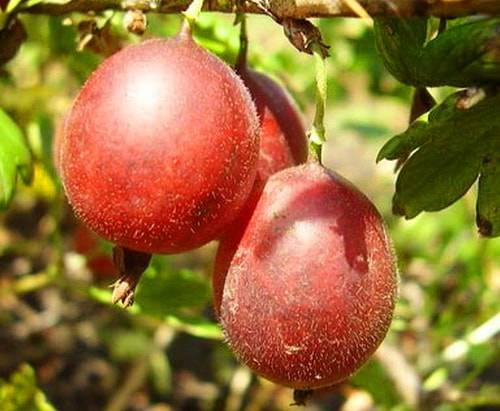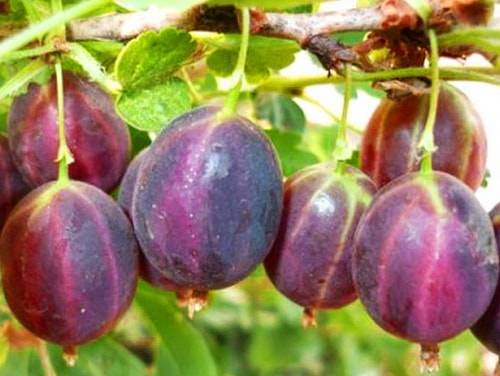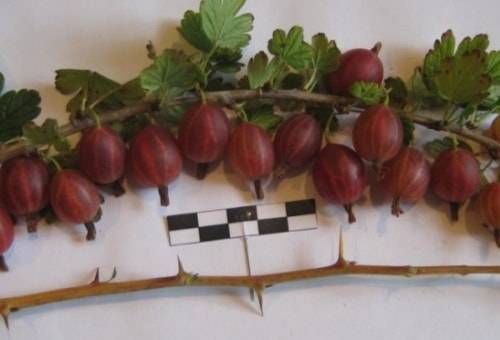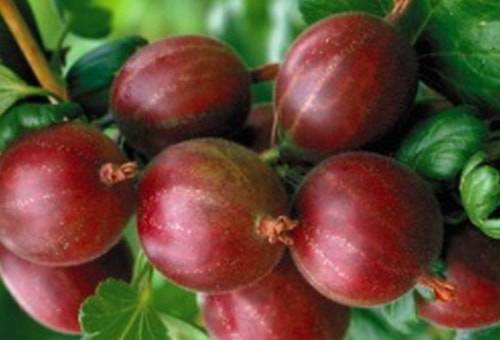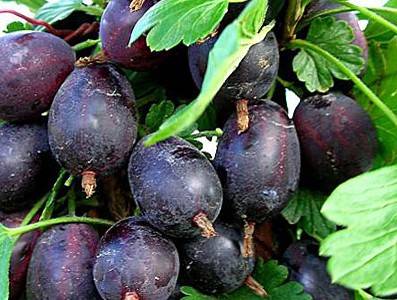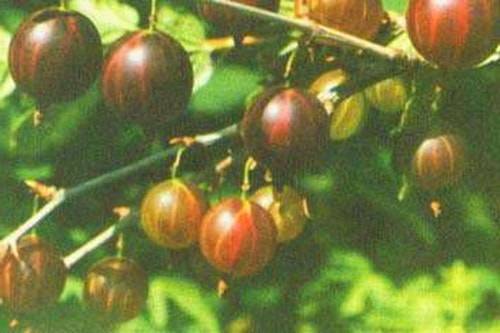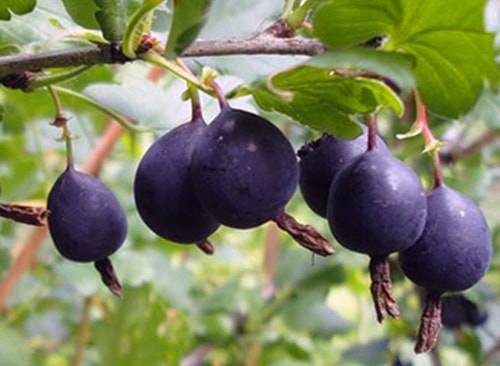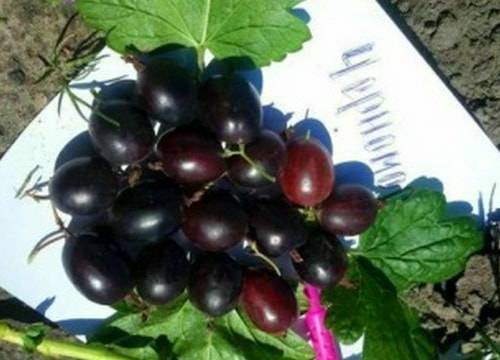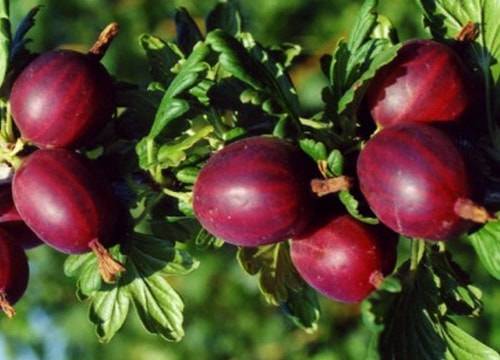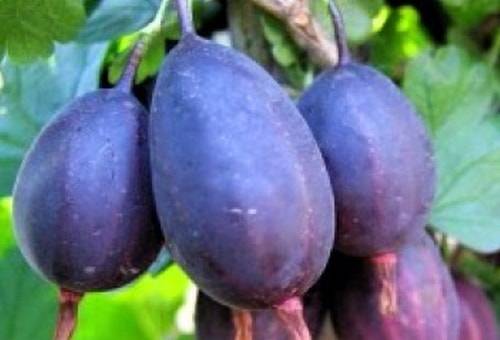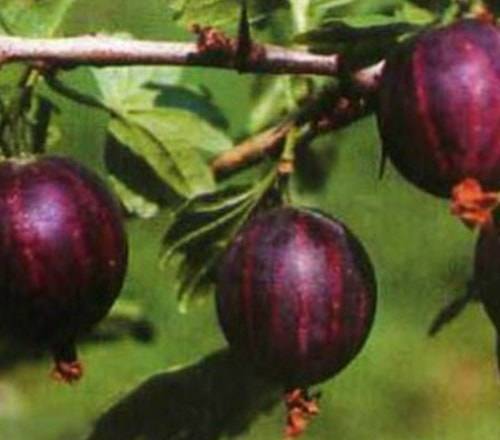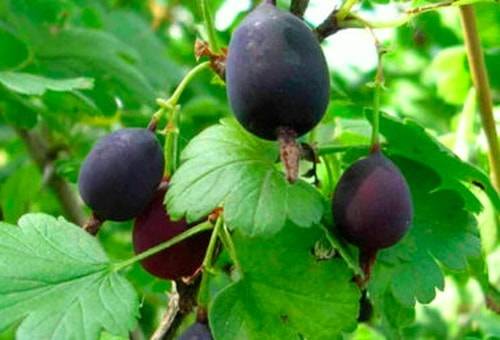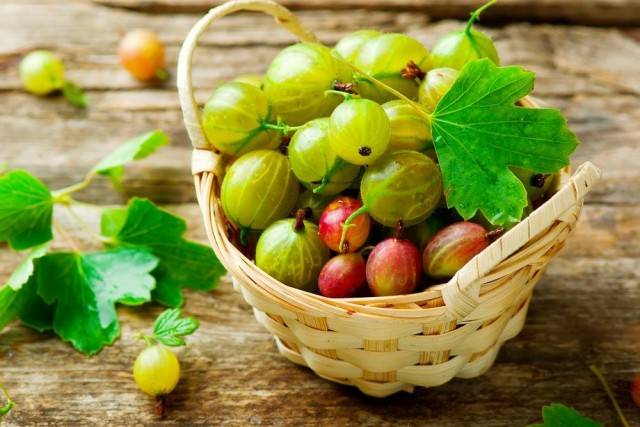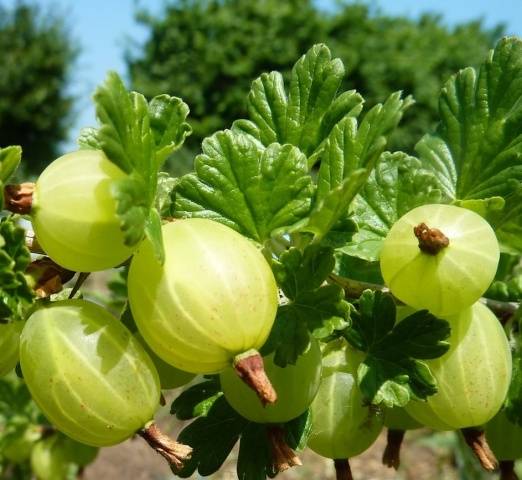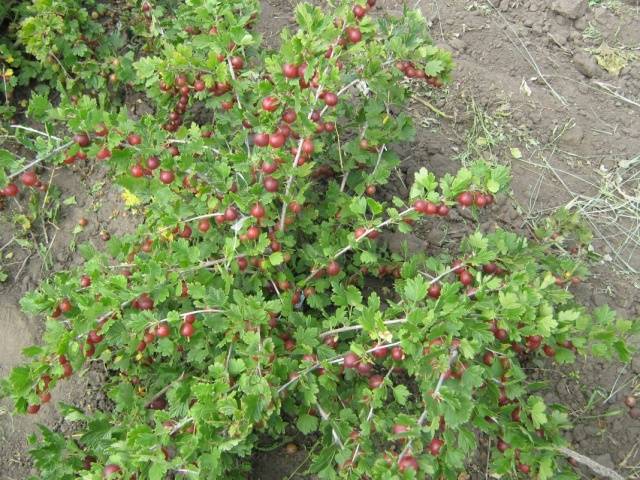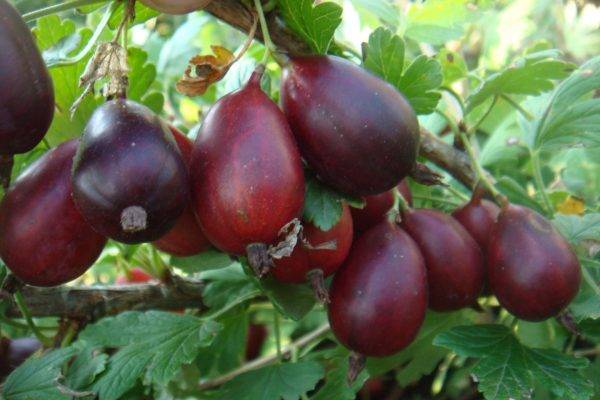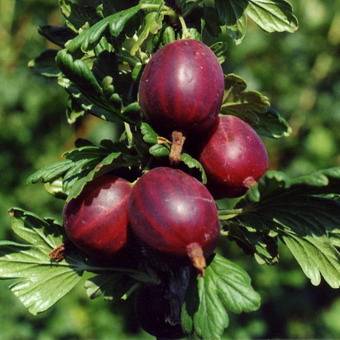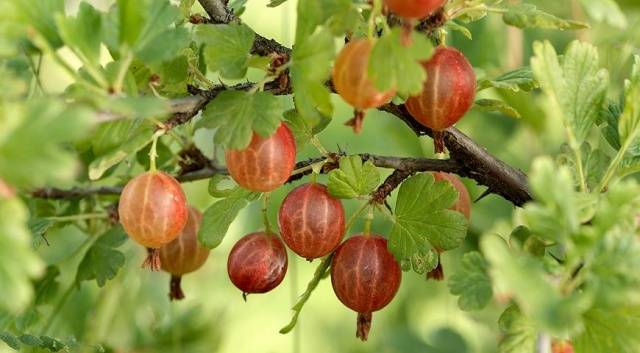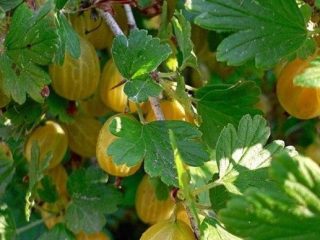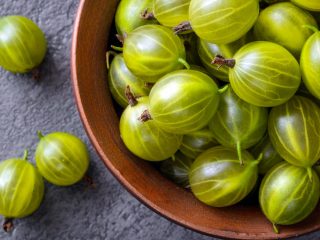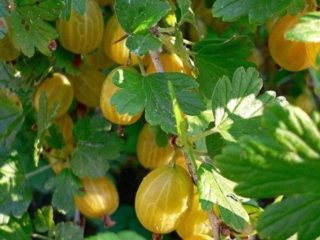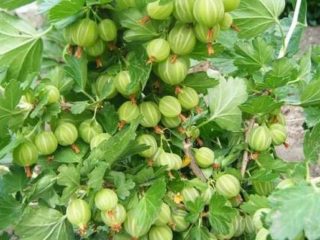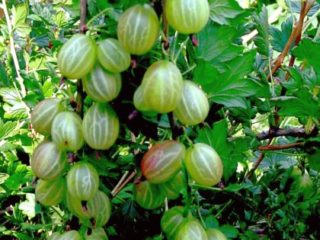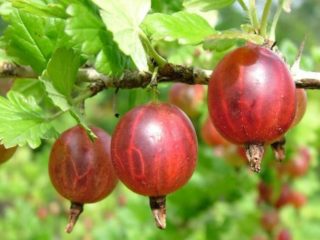Content
- 1 Classification of varieties
- 2 The highest yielding gooseberry varieties
- 3 Varieties of large-fruited gooseberries
- 4 Sweet gooseberry varieties
- 5 Gooseberry varieties without thorns
- 6 Classification of varieties by ripening time
- 7 Systematization of gooseberry varieties by fruit color
- 8 Varieties of yellow gooseberries
- 9 Varieties of green gooseberries
- 10 Red-fruited gooseberry varieties
- 10.1 Belarusian red
- 10.2 Captivator
- 10.3 Kolobok
- 10.4 Consul (Senator)
- 10.5 Candy
- 10.6 Affectionate
- 10.7 Revolt
- 10.8 Sadko
- 10.9 Seedling Lefora
- 10.10 Sirius
- 10.11 Krasnoslavyansky
- 10.12 Masheka
- 10.13 Michurinets
- 10.14 Russian red
- 10.15 Firework
- 10.16 Hinnonmaki Red
- 10.17 Chokeberry varieties
- 10.18 Grushenka
- 10.19 Commander
- 10.20 Harlequin
- 10.21 African
- 10.22 Chernomor
- 10.23 Prune
- 10.24 Cossack
- 10.25 Neslukhovsky
- 10.26 Black Negus
- 11 Classification of varieties by date of registration in the State Register
- 12 How to choose the right variety
- 13 The best gooseberry varieties for the Moscow region
- 14 Which gooseberry varieties to choose for the Leningrad region
- 15 The best gooseberry varieties for Siberia
- 16 The best gooseberry varieties for the Urals
- 17 The best gooseberry varieties for central Russia
- 18 The best gooseberry varieties for the North-West
- 19 Conclusion
- 20 Reviews
All gooseberry varieties are considered the most productive in the first 10 years. Over time, the berries gradually become smaller. The bushes are capable of growing up to 2 m in height. Thanks to self-renewal by basal shoots, the life of the plant reaches 40 years. However, a person must take part in the formation of the crown by removing old branches. Depending on the variety, you can collect from 5 to 12 kg of berries from a bush.
Classification of varieties
Initially, by origin, culture was divided into two main types:
- European varieties produce large berries with a bright aroma and excellent taste. However, the disadvantage is poor disease resistance. In addition, the plant is difficult to propagate.
- American varieties are hardy. The plant propagates easily. You can increase the number of bushes by layering or cuttings. A negative feature is the large thorns on the branches. The fruits are much smaller, and the taste suffers.
Breeders took into account all the characteristics of the crop and developed a third group of varieties - American-European.The result was a gooseberry with high yields, tasty fruits, and resistance to frost and disease.
Gardeners often dislike shrubs because of their thorns. The thorns interfere with harvesting and caring for the plant. However, there are varieties with a small number of thorns or completely thornless.
In terms of ripening, like all crops, gooseberries can be early, middle and late. There are varieties that bear fruit in the intermediate period: mid-early or mid-late.
The culture is classified according to self-fertility:
- self-pollinating varieties are able to bear fruit on their own, even if there are no pollinators nearby;
- self-sterile varieties are not able to bear fruit if there is no pollinator nearby.
The disease resistance of the crop is average and high, but only two varieties are 100% immune to spheroteca: Whitesmith and Spinefree.
Based on the color of the berries, gooseberries are divided into the following groups:
- Chokeberry. This group includes berries that are purple or dark red in color and turn black when ripe.
- Yellow-fruited. Berries of this group, when ripe, acquire golden, orange, amber and other shades.
- Green-fruited. The berries remain green even after ripening. Sometimes the sun may cause the fruits to turn slightly yellow.
- Red-fruited. Ripe berries become red with burgundy, pink and other shades.
In addition to the color of the berries, the crop is classified according to the shape of the fruit:
- oval;
- spherical;
- pear-shaped;
- ovoid;
- barrel shape.
No less important is the classification according to the resistance of berries to mechanical damage. The stronger the skin of the fruit, the longer the harvest will last and be transportable.
Gardeners often look at the size of the berries when choosing a variety. Fruits weighing more than 5 g are considered large. The medium-fruited group includes plants that bear berries weighing less than 5 g. Additionally, all fruits can be divided according to the structure of the skin, which can be smooth or hairy.
All bushes up to 1.5 m high are classified as medium-sized varieties. There are plants more than 1.5 m high. This type of gooseberry is classified as a tall variety.
The highest yielding gooseberry varieties
Productivity depends not only on the characteristics of the variety. This characteristic is influenced by care, climatic conditions, and soil condition. The most productive varieties are presented in the table.
High yielding | Medium-yielding |
Mysovsky 17 | Green bottle |
Industry | Red large |
Houghton | Lancer |
Date fruit | Lemon giant |
English yellow |
|
Varieties of large-fruited gooseberries
Most summer residents try to plant large-fruited varieties on their plots to please their children. With normal care, the average weight of berries reaches 5-6 g. There are specially bred crops that bear giant fruits weighing up to 54 g. To grow such a gooseberry, a summer resident will have to put in a lot of work. It is easier to give preference to traditional varieties and follow the conditions of agricultural technology.
Name | Description |
People's | The mid-season crop produces pink berries weighing more than 5.1 g. The bush is tall with a small number of thorns. The plant is not winter-hardy. |
Favorite | Gooseberries are of medium ripening age. The berries weighing up to 4.5 g are green and turn slightly yellow when ripe.Medium height bush with small thorns. The plant is winter-hardy, but in inclement summers it is susceptible to anthracnose. |
Plum | The ripening period of berries is mid-early. The fruits grow weighing up to 6.5 g. The color, shape and aroma of the berry resemble a plum. The bush is tall, neat with large thorns. Frost resistance is high. |
Sweet gooseberry varieties
Lovers of sweet berries don’t even care about their size. For a true gourmet, the most important thing is taste.
White Nights
The berries are small, weighing about 3 g, but very sweet. The yield reaches 6 kg per plant. The variety is early, resistant to frost and powdery mildew.
Candy
Fragrant and sweet fruits grow weighing a maximum of 3.1 g. The variety is universal, tolerates drought and frost. The branches are covered with medium-sized thorns. Productivity depends on growing conditions and varies from 1.8 to 6 kg.
Pink 2
The parents are Seedling Lefora and Date. A medium-early, large-fruited variety. The average weight of a berry is 6 g, but there are giants weighing more than 10 g. Up to 5 kg of sweet berries are collected from the plant.
Seedling Lefora
The yield of the variety varies from 2 to 3.5 kg. Harvest ripening is mid-early. Plant with small spines, winter-hardy. Fruit weight 3.8 g.
Cooperator
The ripening period is average. The berries are large, weighing up to 8 g. The yield of the variety with good care reaches 6.9 kg per plant. There are few thorns. The bush is spreading and dense. The variety resists pests and powdery mildew.
Belarusian sugar
The bush is tall and neatly formed. The branches have medium-sized spines. Harvest ripening period is average. The weight of large berries reaches 8 g. Productivity is up to 6 kg per plant. The variety is moderately resistant to powdery mildew.
Russian yellow
The variety has excellent resistance to powdery mildew.Harvest ripening is an average period. Gooseberries have small thorns. The weight of the berry reaches 7 g. One plant produces about 4 kg of harvest.
Sirius
The variety is small-fruited, but is liked by lovers of very sweet berries. The ripening period is medium-late. Berry weight is from 2 to 3.5 g. The yield is high, up to 7.3 kg per plant. The bush is thornless and can withstand frost.
Beryl
The parents are the varieties Malachite and Nugget. The bush is dense, not very spreading. There are few thorns. Fruit ripening period is average. The weight of the berries is about 3 g. The yield varies from 3 to 9 kg per plant. The shrub is considered winter-hardy and is not afraid of powdery mildew.
Chernomor
The small-fruited gooseberry is famous for its sweet berries. The ripening period is medium-late. The bush is covered with small thorns. Fruit weight is 3 g. Productivity reaches 4 kg per bush. The plant is winter-hardy and is not afraid of powdery mildew.
Gooseberry varieties without thorns
Children and adults love thornless gooseberries. The absence of thorns makes it easier to pick berries. In terms of taste, it cannot be said that thornless varieties are superior, but they also do not lag behind their relatives.
Name | Short description |
Gulliver | The berry is small, but the taste is pleasant, sweet with gentle sourness. The variety is winter-hardy and is not afraid of powdery mildew. |
Consul | Extraordinarily tasty berries containing a lot of ascorbic acid. Due to the thin skin, the fruits must be processed immediately after picking. |
Matveevsky | The bushes are moderately spreading, loving free space. The fruit weighs about 4.5 g. Ripe berries do not fall off the bush. |
Eaglet | The variety is popular due to its high yield, which reaches 6.6 kg per plant. The shrub tolerates frost well. |
Redball | Gooseberries are loved by summer residents due to their resistance to all known diseases. The variety is considered early ripening. |
The video talks about growing thornless gooseberries:
Classification of varieties by ripening time
To provide the family with tasty and healthy berries for the whole season, 1–2 gooseberry bushes of different ripening periods are planted on the plot. It should be taken into account that the early ripening crop begins to bloom in April. For cold regions this option is dangerous. Early ovaries may be damaged by frost.
Early ripening
The group of early-ripening varieties includes gooseberries, whose harvest ripening dates fall at the beginning or middle of June. Several worthy representatives are shown in the table.
Name | a brief description of |
Spring | The variety is high-yielding, resistant to cold and disease, but has one drawback. After ripening, the fruits must be removed in time. The berries do not fall off, but lose their taste. |
Grandee | Gooseberries bear large red fruits weighing up to 15 g. The plant has small thorns. |
Affectionate | The thornless variety produces berries weighing 7 g. The bushes are small and compact. |
Gentle | The characteristics are similar to the Laskovy variety. The difference is the presence of small spines. The crop needs regular pruning. |
Pax | The culture of English selection bears fruits weighing up to 10 g. There are few thorns on the young branches. |
Favorite | The shrub is rarely attacked by insects and is resistant to spheroteca. The berries become yellow when ripe. Fruit weight is about 4 g. |
Mid-season
Medium-ripening gooseberries are ready for harvest from mid-July. Let's look at the worthy representatives of this group in the table.
Name | a brief description of |
Nekrasovsky | The bushes are moderately spreading.Ripe berries have a plum flavor. The purpose is universal. |
Garkate | Variety of Latvian selection. Ripening fruits become dark purple in color. Berry weight is about 4 g. |
Nova | Gooseberries have no thorns on their fruiting branches. The mass of the red berry is more than 6.5 g. |
Purman | Gooseberry resists spheroteca, but is weak to harsh winters. The buds freeze in the cold. The cherry-colored fruits with small fibers weigh up to 4.5 g. |
Souvenir | Gooseberries are almost never affected by diseases, tolerate winters well, and quickly grow new shoots. The fruits weigh about 9 g. |
Late ripening
The late gooseberry harvest occurs at the end of July - beginning of August. Let's look at the worthy representatives of this group in the table.
Name | a brief description of |
Korshudin | The fruits do not have a pronounced taste, are small, with a high presence of acid. The variety is intended for amateurs. The bush grows thin thorns. |
Defender | The high-yielding variety can withstand frosty winters. Disease resistance is average. Bushes with needles. |
Mucurines | The branches have small thorns. Productivity is high. Weight of berries is more than 7 g. |
Pokrovsky | The fruits are shaped like pears. Gooseberries are endowed with excellent immunity and are resistant to bad weather conditions. |
Seedling Change | The bush grows up to 1.8 m high. There are small thorns on the branches. The fruits are pink on top and green on the inside. |
Systematization of gooseberry varieties by fruit color
Based on the color of the berries, gooseberries are divided into four groups. During ripening, fruits can acquire different shades, which depends on weather conditions, varietal characteristics and gardeners’ compliance with crop cultivation techniques.
Varieties of yellow gooseberries
Altai license plate
Fruit weight 8 g.The bush is low, almost not spreading. It takes root in all regions. The variety is productive, mid-early, and not affected by powdery mildew.
Amber
The bushes grow tall, the crown is spreading. The oval-shaped fruits weigh about 6 g. Ripening is early. Gooseberries tolerate frosty winters well. It has not been registered in the State Register, but gardeners grow it in all regions.
Altai yellow
A crop with a dense crown and spreading branches of medium height. Fruit weight reaches 6 g. Ripening is mid-late. The fruits are sweet, but prone to cracking in rainy summers.
Kuršu Dzintars
Medium height plant. The crown is compact, almost not spreading. The fruits are sweet, oval, weighing about 3 g. The ripening period is average. Gooseberries are suitable for all regions.
Honey
Tall crop with a medium spreading crown. The pear-shaped fruits are sweet, aromatic, weighing up to 6 g. Gooseberries are very difficult to care for, susceptible to diseases, resistant to cold, recommended for central regions.
Russian yellow
Medium growing plant. The egg-shaped fruits weigh up to 6 g. The skin is covered with a waxy coating. Ripening time is average. Gooseberries are resistant to wintering and drought, recommended for the Ural and North-Western regions.
Anniversary
The branches are slightly spreading, curved towards the ground. The berries are oval, weighing about 5.5 g. Gooseberries are frost-resistant, rarely affected by powdery mildew. Ripening time is average. The variety is recommended for the Central Black Earth region.
Spring
The plant is of medium height, the branches are straight, almost not spreading. Round fruits weigh 3-5 g. Ripening dates are early. Gooseberries are winter-hardy, not afraid of powdery mildew, and are grown in all regions.
Varieties of green gooseberries
Beryl
A medium-sized plant with branches curved towards the ground. The fruits are sweet and sour, round, weighing up to 9 g. The crop tolerates wintering well, but is moderately resistant to diseases. Ripening time is average. The variety is recommended for the West Siberian and Ural regions.
Grossular
Tall shrub with straight shoots. Mid-early crop, recommended for the southern regions. The weight of berries is from 4 to 8 g. The shrub is resistant to drought and powdery mildew.
green rain
A plant of medium height with slightly spreading branches. The fruits are sweet, weigh about 8 g. The crop is medium-late, resistant to wintering and drought, rarely affected by fungi, recommended for the North-West region.
Pushkinsky
Medium-sized bush with slightly spreading branches. The weight of the sweet berry is about 5 g. The gooseberry is a mid-early gooseberry that withstands wintering and is recommended for cultivation in all regions.
Baltic
A spherical shrub of medium height with straight branches. The oval-shaped berries weigh about 4 g. The timing of full ripening of the crop is average. The winter-hardy variety is grown in all regions.
Belarusian sugar
Tall shrub with a compact crown. The harvest date is mid-early. The oval-shaped fruits weigh from 4 to 8 g. The variety is frost-resistant, recommended for the Ural and Siberian regions.
Green bottle
Tall shrub with arched branches. The crown is medium spreading. Large fruits weigh about 16 g. The mid-late winter-hardy variety is grown in the Central region.
Invicta
Tall spreading plant with good winter hardiness. The berries are oval, weighing about 8 g. The mid-late crop is grown in all regions.
Snezhana
Medium height shrub with straight branches. Berry weight is about 6 g.The skin may brown slightly in the sun. Gooseberries are resistant to natural disasters and are grown in all regions. Harvest ripening time is medium late.
Naughty
The crown is slightly spreading and of medium height. The fruits weigh 4-6 g. The ripening period is average. The crop is resistant to powdery mildew and wintering, recommended for the Central and North-Western regions.
Malachite
A shrub with a highly dense crown. The branches are arched. The weight of the round berry is about 6 g. The winter-hardy variety of the middle ripening period is grown in the Central, Ural and other regions with a cool climate.
Mucurinesis
Shrub with a neat compact crown. The berries are round, weighing about 7 g. Mid-late gooseberries have good winter hardiness and are grown in all regions.
Dark green Melnikova
A plant with a slightly spreading crown. Early ripening. The weight of the berries is about 3 g. The crop is winter-hardy, but is afraid of powdery mildew, and is grown in all regions.
Ural grapes
Tall shrub with slightly spreading branches. The berries are large, weighing more than 5 g, and fall off the branches when overripe. Early ripening. Winter hardiness is excellent, but it is afraid of fungal diseases. Grown in the Middle Volga region.
Red-fruited gooseberry varieties
Belarusian red
A shrub with hanging branches and a slightly spreading crown. The weight of the berries is about 5 g. The ripening is mid-early. Frost-resistant gooseberries are grown in the Ural and Siberian regions.
Captivator
A tall shrub with a neatly collected crown. The berries weigh about 5 g. The harvest time is medium-late. Gooseberries are winter-hardy, not afraid of powdery mildew, and are grown in all regions.
Kolobok
The crown of the bush is very thick.The branches are curved. The harvest does not crumble when ripe. The berries weigh about 8 g. The culture does not withstand bad weather conditions and temperature changes, but it reproduces well by cuttings. Harvest ripening period is average. The crop is grown in the East Siberian and Central regions.
Consul (Senator)
Dense tall bush. The round fruits weigh up to 6.5 g. The ripening period is average. Gooseberries are winter-hardy, not afraid of powdery mildew, and are grown in all regions.
Candy
The dense, upright shrub is grown in the East Siberian region. The branches are arched. The maximum weight of the fruit is 6 g. The ripening period is late. It has good winter hardiness.
Affectionate
The medium-sized shrub is characterized by intensive shoot growth. The weight of the berries reaches 8 g. The ripening period is average. It has good frost resistance and is not afraid of powdery mildew. Grown in all regions.
Revolt
A slightly spreading, medium-sized shrub bears berries weighing up to 7 g. Resistance to frost and diseases is high. The ripening period is average. The crop is grown in all regions.
Sadko
A medium-sized shrub with a slightly spreading crown. The round-shaped fruits weigh up to 7 g. Gooseberries are resistant to powdery mildew, grown in all regions, ripening dates are mid-early.
Seedling Lefora
A tall, spreading plant with downward-curved branch tips. The fruits are small, weighing 3-4 g. The ripening period is average. Grown in the Northern, Siberian and other cold regions. The variety is considered an excellent pollinator.
Sirius
An erect tall shrub with powerful branches. The weight of the berries is about 4 g. The ripening period is average.Gooseberries are resistant to wintering and dry summers, grown in the Central Black Earth region.
Krasnoslavyansky
A plant of medium height with straight, non-spreading branches. The oval-shaped berries weigh up to 6 g. The ripening period is average. Gooseberries are moderately resistant to diseases and are grown in the Central and Northwestern regions.
Masheka
Dense crown, spreading branches, slightly inclined to the ground. Oval berries of medium size. Ripening time is average. Good winter hardiness, low disease resistance. Gooseberries are grown in the Central region.
Michurinets
The crown is formed with a sparse arrangement of branches. The shoots are arched. The berries weigh about 3 g. The ripening period is medium-late. Frost resistance is average. It can be grown in all regions if you follow agricultural practices.
Russian red
Medium growing shrub with weak formation of branches. Weight of berries is maximum 6 g. The crop has a mid-late ripening period. Gooseberries are winter and drought resistant and are grown in all regions. The only exception is the Ural region.
Firework
A neat bush of medium height. The variety has excellent disease resistance, but frost resistance is average. The berries weigh from 2 to 7 g. They are grown in the Central, Volga-Vyatka region.
Hinnonmaki Red
Intensively growing plant with straight branches. The weight of the berries is about 7 g. The ripening period is mid-early. Good disease resistance. Grown in all regions.
Chokeberry varieties
Grushenka
Slightly spreading compact shrub. Dark purple berries weigh more than 4 g. The branches are thornless. Winter hardiness is high. Grown in the middle zone and Moscow region.
Commander
A vigorous shrub native to Italy. It takes root best in the southern regions.The branches are thornless. The weight of the berries reaches 7 g. Gooseberries are weakly resistant to diseases.
Harlequin
The medium-sized shrub bears cherry-colored fruits with a black tint, weighing 4-7 g. The plant is resistant to wintering and powdery mildew. Grown in the West Siberian and Ural regions.
African
The medium-sized shrub bears small berries that taste like black currants. Gooseberries are resistant to frost, drought, and disease and are grown in all regions.
Chernomor
Tall plant with erect shoots. Weight of berries is maximum 3 g. Ripening is medium late. Gooseberries tolerate winter well and are not afraid of powdery mildew. Grown in the Central region.
Prune
The bush is medium dense, slightly spreading. Weight of berries is about 4 g. Medium early ripening. Gooseberries tolerate frosty winters well. Grown in the Ural and Middle Volga regions.
Cossack
A very spreading shrub with slightly curved branches. The average weight of berries is 4 g. They are resistant to wintering and dry summers. Grown in the Central Black Earth region.
Neslukhovsky
The shrub is not spreading, neat with even shoots. The maximum weight of berries is 6.5 g. The early variety is resistant to wintering and diseases. Grown in all regions.
Black Negus
A tall plant with spreading curved branches. The fruits, weighing about 2.5 g, fall off when ripe. Good resistance to frost and disease is noted. Grown in all regions. Harvest ripening period is average.
Classification of varieties by date of registration in the State Register
Forty-six varieties are registered in the State Register. There are old representatives of culture and many new products.
New gooseberry varieties
All new products developed in the twenty-first century are distinguished by winter hardiness and good immunity, which allows them to be grown in many regions, regardless of the climate. Breeders additionally focused on large fruit. The new varieties include the following varieties:
- White Nights;
- Defender;
- Cossack;
- Candy;
- Favorite;
- Folk;
- Spring;
- Northern Captain;
- Serenade;
- Snezhana;
- Ural emerald;
- Ural pink;
- Flamingo;
- Shershnevsky;
- Eridanus.
The new products differ in the color of the berries and other characteristics.
Old gooseberry varieties
The first varieties were bred and registered in 59 of the last century. Worthy representatives are:
- Malachite;
- Russian;
- Seedling Lefort;
- Change;
- Chelyabinsk green.
Despite the fact that gooseberries were bred a long time ago, the varieties are still popular among gardeners.
How to choose the right variety
Depending on climatic conditions, the taste and size of berries of the same variety may vary. When choosing, it is better to give preference to a culture adapted to the local climate. Residents of the southern regions are better off growing drought-resistant gooseberries. Gardeners in cold regions should focus on winter hardiness.
The best gooseberry varieties for the Moscow region
In the climatic conditions of the Moscow region, gooseberries of foreign selection take root well, but there are also domestic representatives.
Thornless gooseberry varieties for the Moscow region
Those who like to pick berries from thornless branches will like: Thornless gooseberry, Eaglet, African, Northern captain, Ural thornless. All varieties are perfectly adapted to the local climate.
Sweet gooseberry varieties for the Moscow region
Those with a sweet tooth will rightly appreciate the following varieties: English yellow, White nights, Lefort seedling. The berries have a low acid content and are well suited for making jam and compote.
Which gooseberry varieties to choose for the Leningrad region
Zoned varieties are those that are characterized by frost resistance, resistance to powdery mildew, and good yield. You can include in the list Lefort seedling and white nights. Varieties from Michurinsk have taken root well Russian red and Russian yellow. Gooseberries show good yield results Smena, Krasnoslavensky, Khinnonmaen punainen, Lighthouse.
The best gooseberry varieties for Siberia
In a region with short summers and severe frosts, winter-hardy gooseberries survive.
Sweet gooseberry varieties for Siberia
If you choose a frost-resistant crop with a sweetness tasting score of 4.8 to 5 points, then in a cold region you can grow:
- Cooperator;
- Chelyabinsk thornless;
- Beryl;
- Legigne, Oksamit;
- Green Rain;
- Naughty;
- Russian;
- Prune;
- Black Drop, Samurai;
- Red East;
- Affectionate, Senator.
All presented gooseberries are winter-hardy and produce tasty berries in bad weather conditions.
Gooseberry varieties without thorns for Siberia
The first thornless gooseberry was zoned in the region Black Cherkashina. The downside of the crop is its small fruits. Later varieties were adapted to the climate Russian and Chelyabinsk thornless.
The best gooseberry varieties for the Urals
The region brings surprises to gardeners in the form of frosty winters and frequent spring frosts down to -10OWITH.Backfilling the root collar with a roller of soil is considered good protection for gooseberries. Gooseberries are zoned here Cooperator, Smart, Stanichny, Jubilee.
The best gooseberry varieties for central Russia
The weather conditions in the region are favorable for growing crops, but sometimes frosts cause damage. In summer, heat and drought contribute. For such an area, it is better to choose a hardy gooseberry.
Varieties of thornless gooseberries for the middle zone
Of the non-thorny varieties, preference can be given to Prune, Consul, Grossular, and Northern Captain. Gooseberries are resistant to powdery mildew and adapt well to local conditions.
Sweet gooseberry varieties for the middle zone
Gourmets and lovers of sweet gooseberries can plant Consul, Ravolt, Hinnonmaki Red, Pushkinsky. The varieties are winter-hardy and are rarely affected by pests and diseases.
The best gooseberry varieties for the North-West
The region is characterized by difficult weather conditions. In addition to resistance to frost, gooseberries are selected that are not afraid of fungal diseases.
Sweet
Among the varieties that bear sweet berries, choose: Krasnoslavyansky, Green Rain, English yellow, Kursha Dzintars. All crops are moderately or highly resistant to fungal diseases.
Thornless
Among the thornless gooseberries, you can choose Grushenka, Kolobok, Northern Captain, Chernomor. The varieties tolerate the gifts of nature in the form of bad weather to an average extent.
Conclusion
To get a good harvest, you need to know how to choose gooseberry varieties. When purchasing seedlings for your plot, you should ask the seller about the characteristics of the crop. All the intricacies of selection and cultivation are shown in the video:
